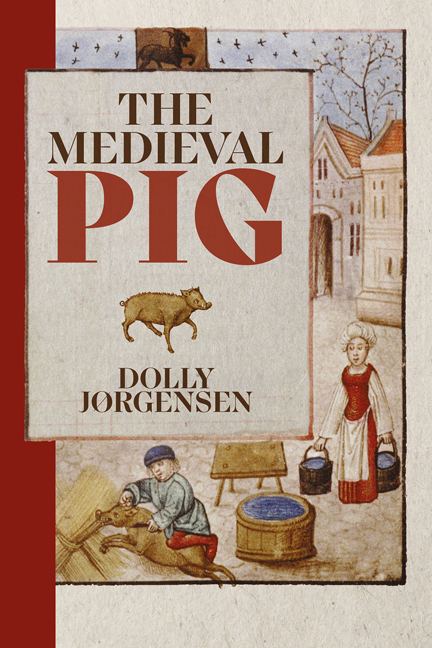2 - In the Country
Published online by Cambridge University Press: 11 May 2024
Summary
Our first place to look for medieval pigs is in the countryside. The landscape of medieval Europe, before industrialisation and mechanisation enabled large-scale forestry or sweeping agricultural clearances, was significantly more wooded than it is today. But that does not mean that woodlands were unused, or dark places where only big bad wolves lurked. In fact, everyone's life in medieval Europe depended on wood: firewood was critical as an energy source for cooking and heating, and timber was the most common building material. Woodlands also provided areas for livestock grazing. While woodlands could be imagined as wilderness in medieval writing, they were very much cultivated as domestic landscapes. It made sense to keep some woodlands intact near settlements to provide for domestic needs. Over the course of the Middle Ages demographic pressures and demand from urban settlements led to more commodification of woodlands and shifts in tree management practices to maximise the production of desirable wood. This led to some changes in woodland cover, but it did not change the fact that woodlands were embedded in medieval agricultural and economic systems.
In the Middle Ages pigs could be found in woodlands and wooded pastures across Europe. There is a simple reason for this: pigs are animals that need to stay cool – they quickly die of sun exposure if not shaded from the sun at temperatures above 35oC – and thus wild pigs are most common in woodlands, where they seek the shade of trees and bushes, or moist micro-environments where they can cool off in the mud.
But before we look to the focus of this book, the domestic pig, we need to take a short detour to the wild boar that roamed the same forests. The wild boar and the domestic pig are genetically the same species and in the Middle Ages had similar body conformations, but that does not mean that people thought of them as the same animal. Instead, they were placed in separate intellectual categories. To medieval writers the boar was the epitome of wildness. Isidore of Seville and the later bestiaries from the twelfth century associated the boar with ferocity: ‘Of the boar. The boar gets its name, aper, from its wildness, a feritate, the letter f being replaced by a p; for the same reason, it is called by the Greeks suagros, meaning wild.
- Type
- Chapter
- Information
- The Medieval Pig , pp. 12 - 29Publisher: Boydell & BrewerPrint publication year: 2024



